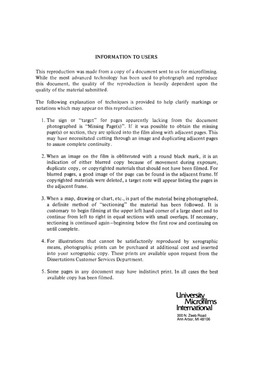| dc.contributor.author | Varjavand, Reza, | en_US |
| dc.date.accessioned | 2013-08-16T12:28:56Z | |
| dc.date.available | 2013-08-16T12:28:56Z | |
| dc.date.issued | 1983 | en_US |
| dc.identifier.uri | https://hdl.handle.net/11244/5153 | |
| dc.description.abstract | The empirical results of this study produced sufficient evidence to reject the hypothesis that the positive effects of government investment on the private sector outweigh its negative effects. Therefore, it is concluded that private investment was adversely affected by government investment. Such a contractionary effect is also confirmed by our findings for private output. This suggests that the rate of growth of the private sector was depressed by government investment during the 1959-77 period. | en_US |
| dc.description.abstract | The main purpose of this study was to assess the role of the Iranian public enterprise sector in changing the structure of that country's economy during its modern history. Particularly, the contribution of the public enterprise to capital formation was evaluated by analyzing the long-run pattern of changes for both public and private investment, and by computing various useful measures. The performance of the Iranian public enterprise is also judged by examining the output and linkage effects. | en_US |
| dc.description.abstract | An econometric model was developed and applied to a time series data of Iran for the 1959-77 period to test the effect of government investment on public enterprise, on private investment and output. This was accomplished by decomposing the private investment into two categories: investment in machinery and investment in construction. For the first category, a negative impact was found implying a "crowding out" effect in the current period that tends to sustain into the future. For the second category, however, our findings indicated a strong positive effect. This led to the conclusion that government investment, overall, has not stimulated direct production investment in Iran during the period of concern. It was, rather, led to the build up of capital stock which facilitated channeling of resources toward the construction activities for which there was no indication of positive contribution to the economy's output. In both cases the government credit to the private sector appeared to be the major determinant of private investment, as indication that the government priorities outlined in the national development plan, provided directives for the type and level of private activities. | en_US |
| dc.format.extent | vii, 162 leaves : | en_US |
| dc.subject | Business Administration, General. | en_US |
| dc.title | Economic development under public enterprise : | en_US |
| dc.type | Thesis | en_US |
| dc.thesis.degree | Ph.D. | en_US |
| dc.thesis.degreeDiscipline | Michael F. Price College of Business | en_US |
| dc.note | Source: Dissertation Abstracts International, Volume: 44-06, Section: A, page: 1858. | en_US |
| ou.identifier | (UMI)AAI8324881 | en_US |
| ou.group | Michael F. Price College of Business | |
